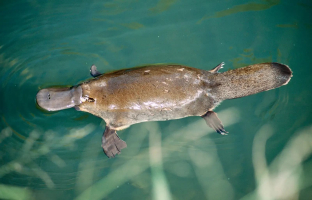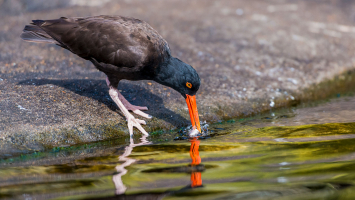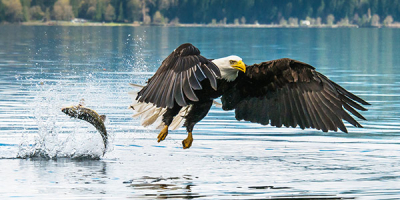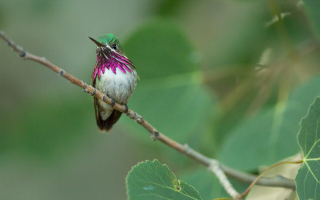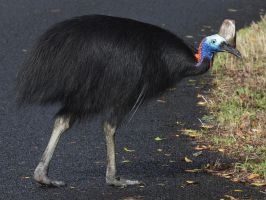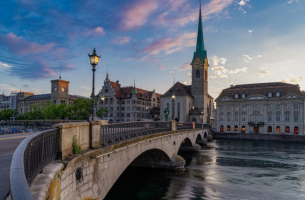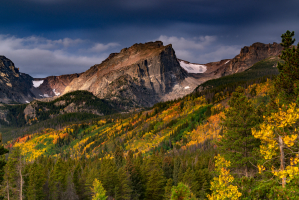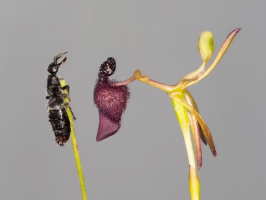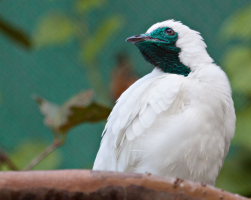Top 10 World's Weirdest Birds
Birds, like many other species around the world, come in a range of shapes, colors, and sizes. A study from the American Museum of Natural History reveals that ... read more...there may be twice as many species as the 9,000 - 10,000 species that have long been widely accepted as existing on Earth. There are many bizarre and unusual species to keep people constantly astonished and amused, and more exotic species are frequently funny-looking or strange to us. Here is a list of the weirdest birds in the world, let's find out!
-
California Condor has a huge wingspan than any other North American bird, measuring 3 meters in length. They have the ability to glide for extended periods of time in air currents and fly at a height of 15,000 feet. Large trees and steep cliffs are where condors build their nests. Condors, which may fly up to 150 miles in a day in search of food, eat primarily decomposing animal flesh.
Only 437 Californian condors have been identified worldwide. They can be found in a number of areas of the US, Mexico, and Canada. The California Condor has an odd appearance due to its brownish-red eyes, featherless head, ivory-colored bill, and the standing black feathers that surround its neck. This bird's head and featherless neck are capable of flushing in response to various emotional states.
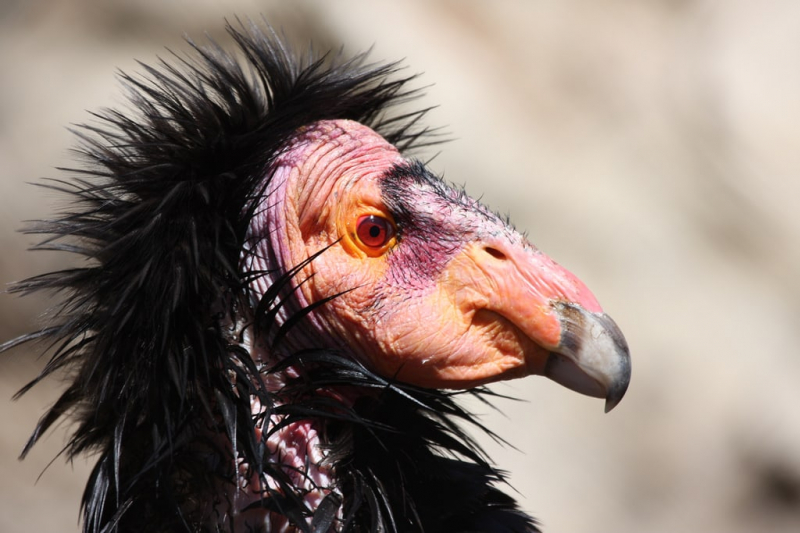
Via: Portland Audubon 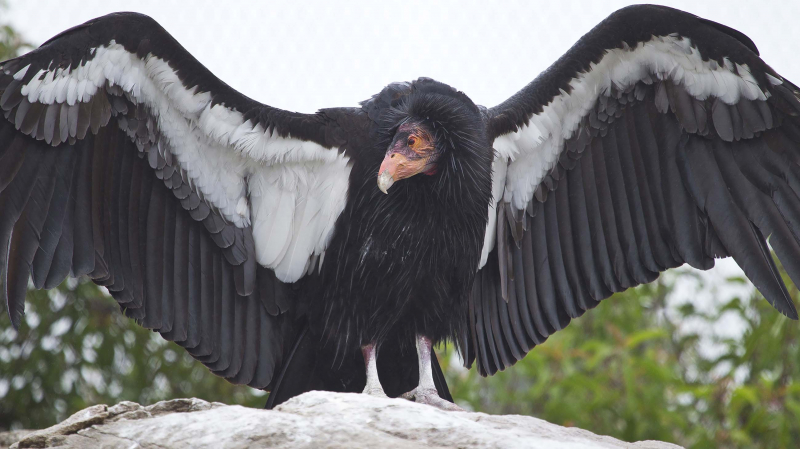
Via: Undark Magazine -
Although most parrots are able to fly, they appear to prefer eating saltines while perched on pirates' shoulders. The Kakapo, however, is an exception to this norm. It shouldn't surprise you in the least that this flightless parrot comes from New Zealand. It was given the scientific name Strigops habroptilus, which translates to "owl-face soft-feather". If you look at one face-on, you can see why; the kakapo has a heart-shaped face that resembles an owl's and does appear to be soft, but it's kind of a strange distinction because you could also say that about an ostrich.
The kakapo is the only flightless parrot, and unlike chickens, it doesn't even pretend to fly, according to Wired. Never does it flap its wings. They serve only as a means of balance and occasionally as a parachutist. The kakapo can climb trees and occasionally slows down when jumping to the forest floor by using its wings.
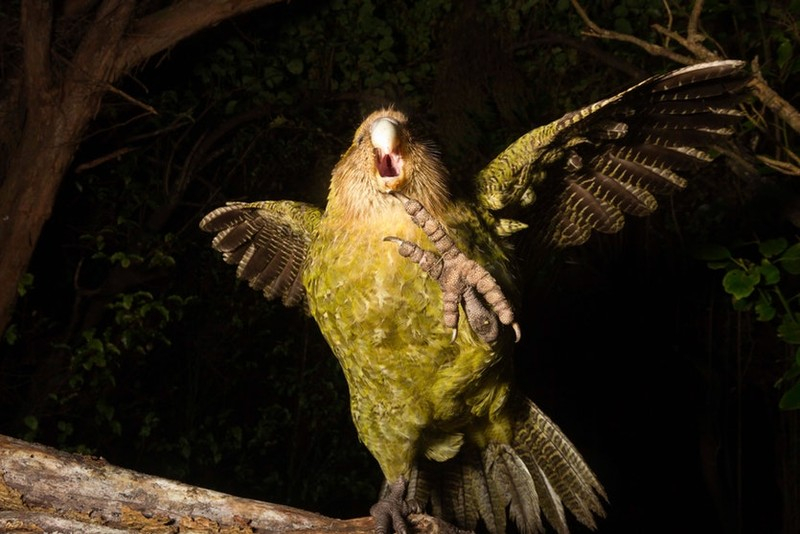
Via: iStock 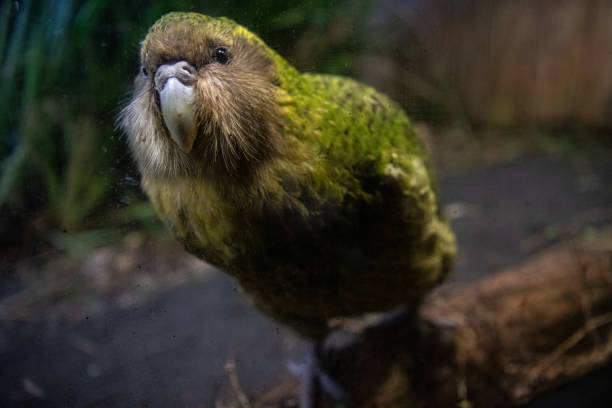
Via: iStock -
The Kagu's ashy white feathers, which are its most noticeable trait, have given it the moniker "the ghost of the forest". This rare and unusual bird can only be found in the New Caledonian island chain, where it is protected as an endangered species and a national symbol. This is especially terrible given how fascinating these birds are. These birds can't fly, even though they have huge wings. Rather, they mostly flap their wings to fend off predators that might harm their young. The dark stripes on its wings are thought to serve as a deterrent.
These strange birds of the planet are skilled navigators even when they lack the ability to fly. It can move swiftly and easily through its habitat's dense roots and rocks thanks to its large legs, which also make it a good runner. Even when it's at its most athletic, its big wings keep it balanced.
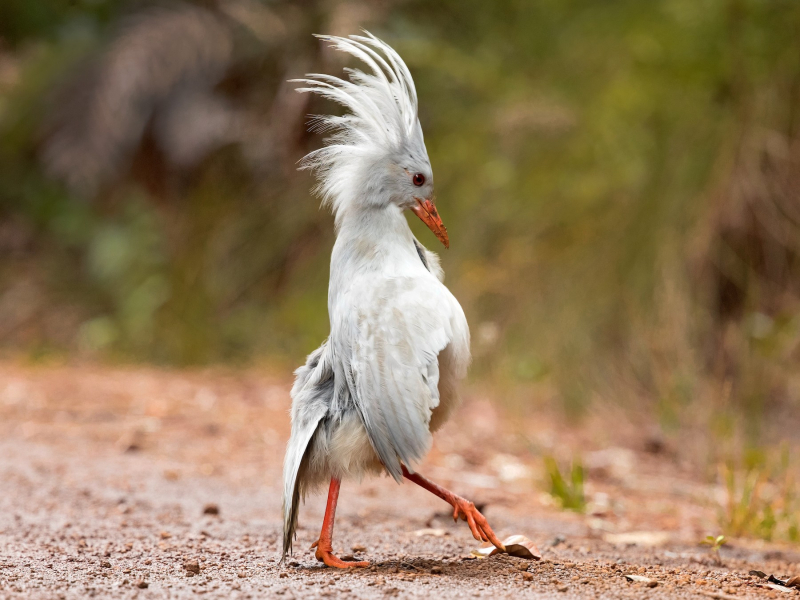
Via: eBird 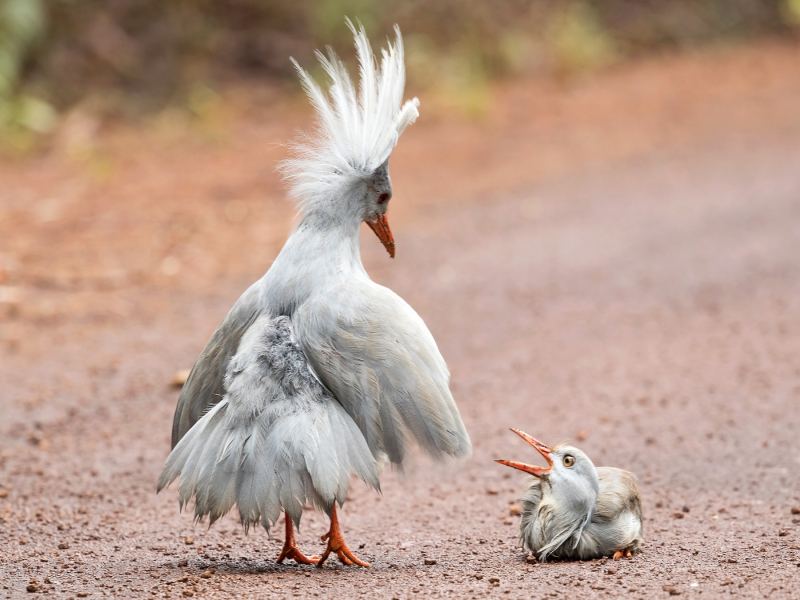
Via: eBird -
Even though the Tawny Frogmouth looks a lot like an owl at first glance, its absence of clawed claws disqualifies them from being included in this group of birds. They rely on their distinctive beaks to acquire prey because they lack the capacity to grab and disable prey with their feet. These amusing birds will also passively capture food by simply leaving their mouths open and hoping for insects to fly in. Their huge mouths are incredibly precise when on the hunt.
The Tawny Frogmouth's feathers provide superb camouflage, making it a frequently successful tactic. These birds seamlessly blend into tree trunks when stationary, and they frequently change their posture to more closely mimic a branch or limb. Due to their distinctive blends of characteristics, they are among the most adored birds in Australia and Tasmania.
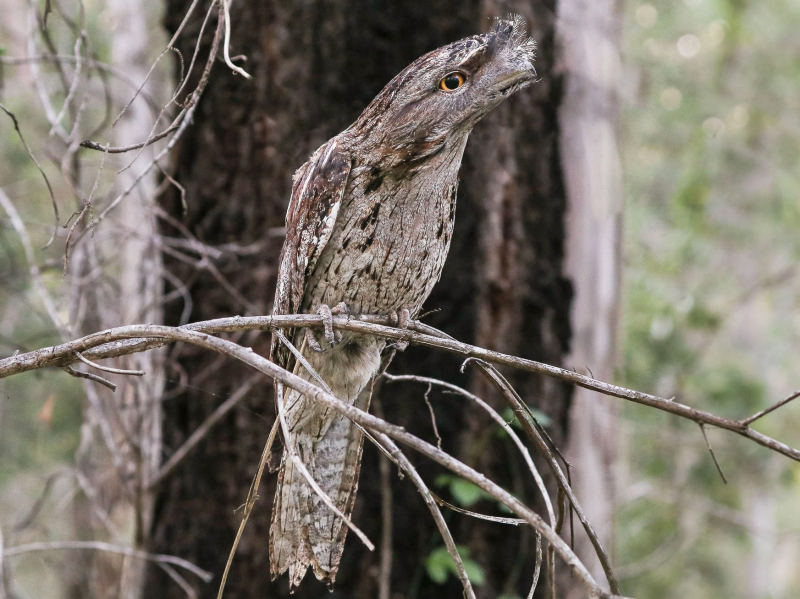
Via: eBird 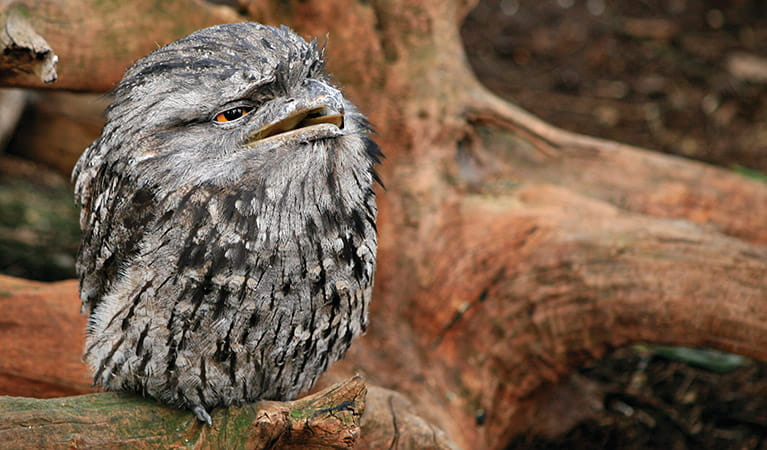
Via: NSW National Parks - NSW Government -
Southern Cassowaries are found in northern Queensland. The species is also found in New Guinea and eastern Indonesia. Cassowaries are known as the "world's most dangerous bird" and have a fearsome reputation among birds who cannot fly. Its size, razor-sharp claws, and aggressive demeanor when trapped or threatened to earn it this title.
They can weigh up to 130 pounds and range in height from 5 to 6.6 feet. Their tiny wings are terminated with stiff, keratinous quills that resemble those of a porcupine but lack barbs. Cassowaries have a blue wattle on their neck and a huge, age-related golden or blue casque on their heads. Cassowaries have a top speed of 30 mph and are good swimmers and long-distance jumpers. Fruits make up the majority of their diet, along with tiny invertebrates, birds, rats, and fish.
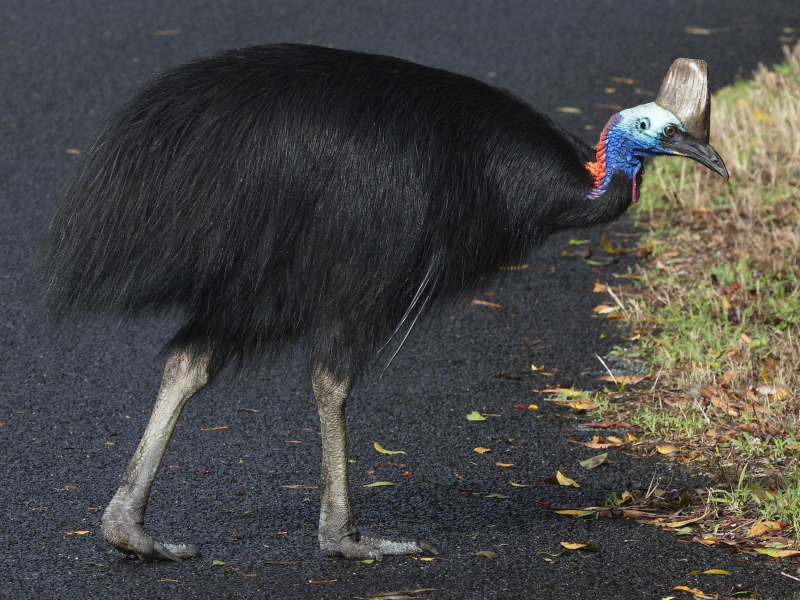
Via: eBird 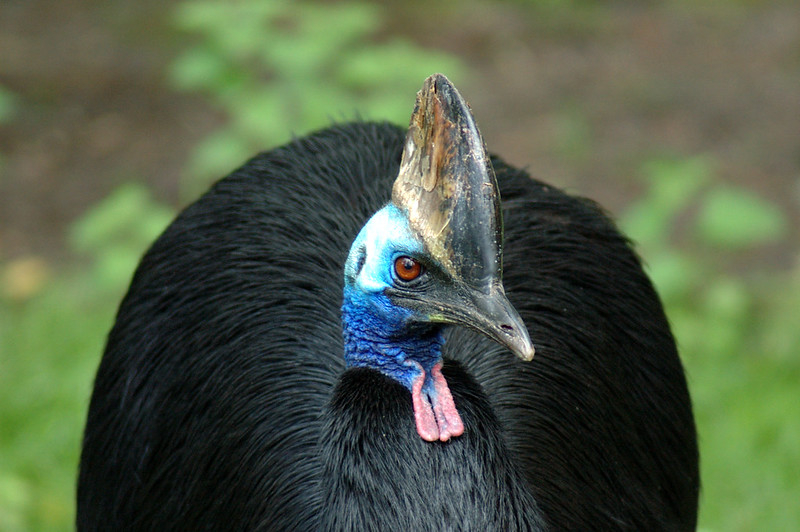
Via: WorldBirds -
The Burrowing Owl is one of the few types of birds that live in a proper burrow. Indeed, it most often moves into burrows vacated by prairie dogs. It’s found in the grasslands of North and South America. The fact that this tiny owl is active during the day rather than at night sets it apart from other owls. They are similar to prairie dogs in that they may dwell near fields, roads, and houses as well as in colonies with other burrowing owls. They've been discovered even on airport runways. Burrowing owls have an additional intriguing characteristic in that when threatened, they will not only flee into their burrow but also make noises that resemble rattlesnake warning calls.
The burrowing owl constructs its nest within the lined with cow dung burrow. This influences environmental control and draws insect prey. Additionally, it scatters this feces all around the burrow's opening. Both parents care for the chicks when they hatch while the female incubates the eggs and the male provides food for her during the breeding season.
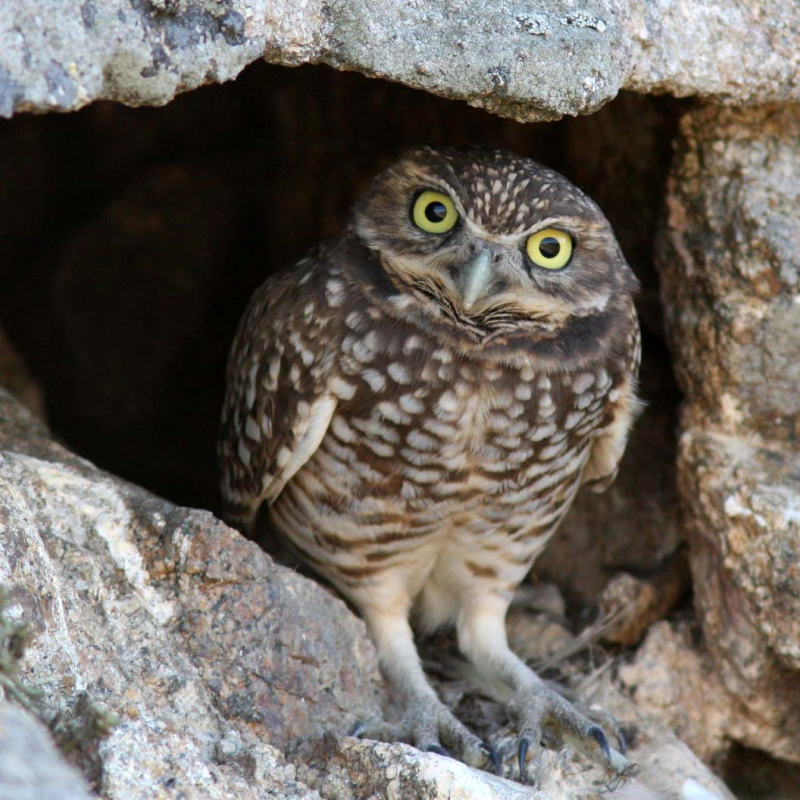
Via: River Otter Ecology Project 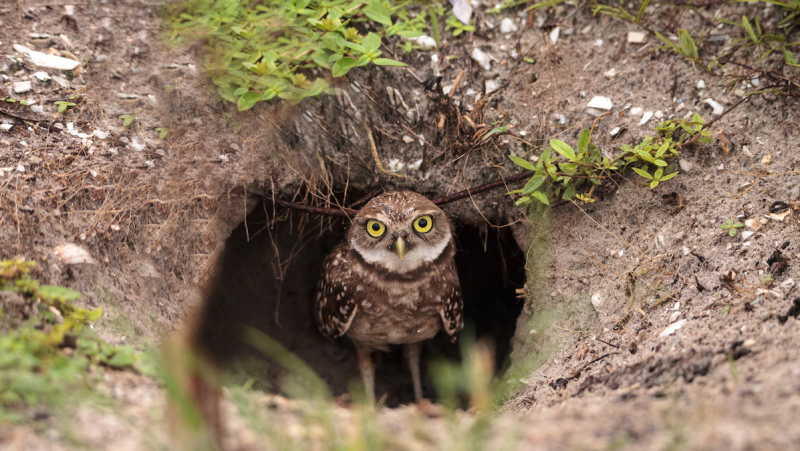
Via: EcoWatch -
The Hoatzin is among the strangest-looking birds in the world because it appears to have been put together from leftover parts of half a dozen different bird species. It is an unruly collection of hues and patterns that may be found in the depths of the Amazon, along with talons that protrude from their front limbs. But there's no need to be alarmed if that sounds frightening. The Hoatzin is a very ungainly bird because of its haphazard combination of traits.
Despite having the ability to fly, the Hoatzin has poor air performance, hence the greatest escape method they have found for their young is to roll out of the nest and into the water when a predator approaches. The stink of this incredibly strange bird, though, is what stands out the most. It has acquired the nickname "Stinkbird" due to its distinctive manure-like stink. One of the stinkiest animals in the world, according to popular opinion.
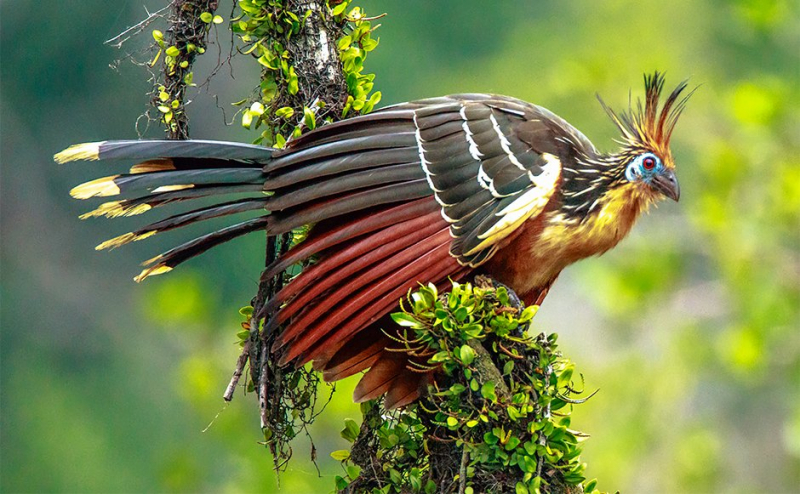
Via: Wild Latitudes 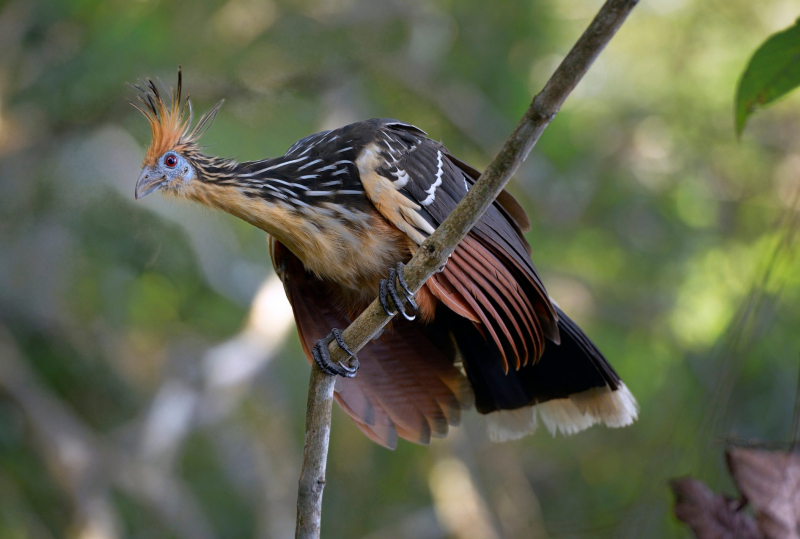
Via: Discover Wildlife -
When you first view the Magnificent Frigatebird's vivid crimson neck, it's simple to think that it is lovely but not very unusual in comparison to other bird species. But if you saw it during mating season, you would reconsider your stance. The reason for this is that the males of this subtropical bird species have the ability to inflate the pouch around their neck until it resembles a huge red balloon. And oddly enough, it appears that this feature is only there as a mate-attraction strategy. Females of the species don't even have the pouch itself.
These birds can't swim, even though they can be found in both the Atlantic and Pacific. Fortunately, these unusual birds can fly much farther than other types of birds due to their large wingspan, which in males can measure up to eight feet. The males of this species are known to have the world's largest bird wingspans.
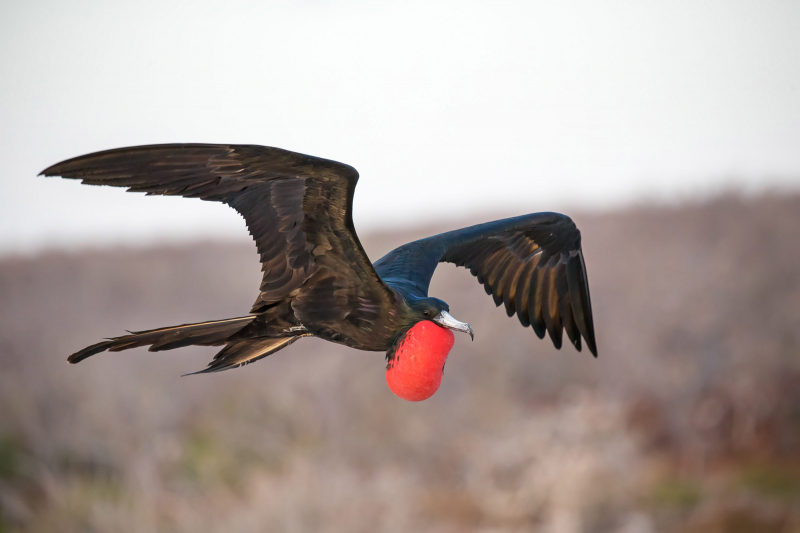
Via: National Audubon Society 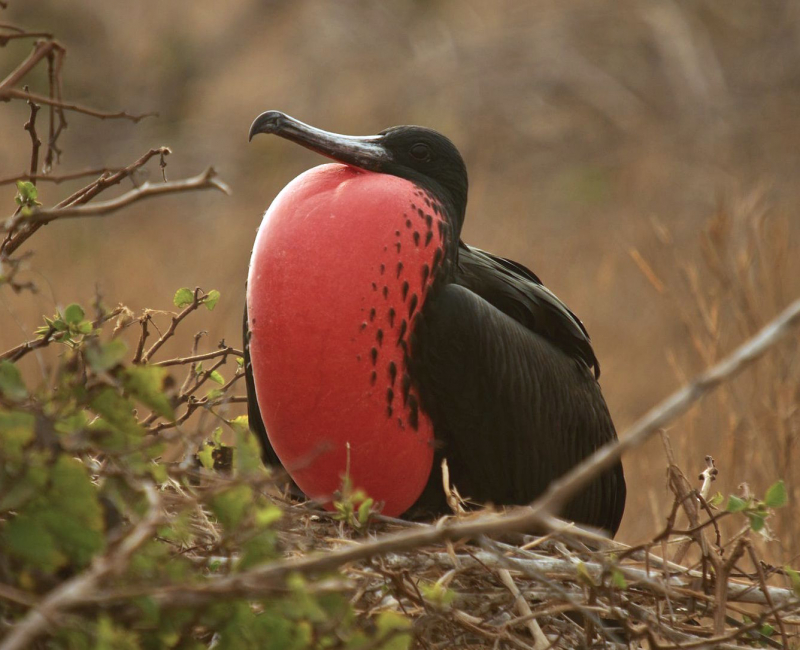
Via: Wikipedia -
Superb Bird Of Paradise is native to the woods of New Guinea and is well-known for its colorful ornamental plumage and mating dance. The male and female of this bird look very different from one another. The male bird has a vivid blue crest, a shield with a blue-green mix, and velvet black on its back. The female bird has a reddish brown tint, which makes it less beautiful than a male bird.
If you look at the population of the magnificent bird of paradise, you may observe that there are not as many females as there are males. As a result, male avian competitors for females emerge. They perform an interesting mating dance to entice females. Black feathers are folded upward and spread symmetrically across the bird's chest as part of its courtship display. The male bird then performs a tail feather dance around the female. It is a little bird, measuring up to 26 centimeters in length and weighing between 60 and 100 grams. Additionally, they sing loudly to entice female birds.
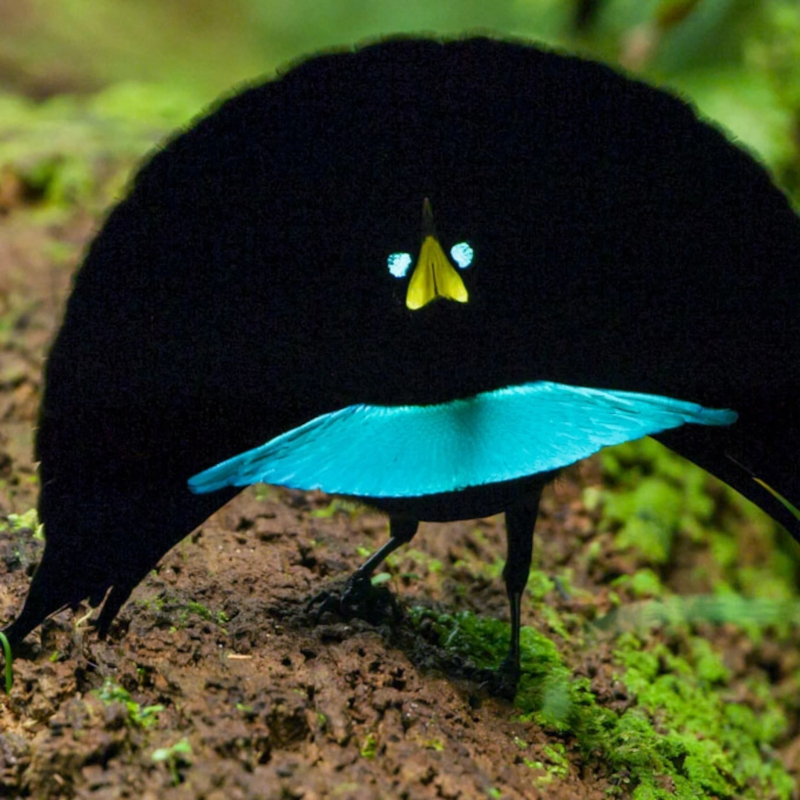
Via: National Geographic Via: Cornell Lab of Ornithology -
The Andean Cock-Of-The-Rock, also known as tunki (Quechua), is a large passerine bird of the cotinga family native to Andean cloud forests in South America. It is widely regarded as the national bird of Peru. It has four subspecies and its closest relative is the Guianan cock-of-the-rock. They also feature a head, neck, and chest that are a vivid orange color, a black body, and gray wings. Female birds, in contrast to male birds, have a tiny crest and an upper body that is colored brownish-orange. It is also thought of as Peru's national bird.
The Andean cock-of-the-rock eats a diet of fruit, supplemented by insects, amphibians, reptiles, and smaller mice. Even though it is being affected by the destruction of its habitat, the Andean cock-of-the-rock is not classified as threatened. Only the Andean cock-of-the-rocks may reach a maximum length of 32 centimeters and a maximum weight of 230 grams. They employ saliva, mud, and vegetable debris to build their concave cup-shaped nest.
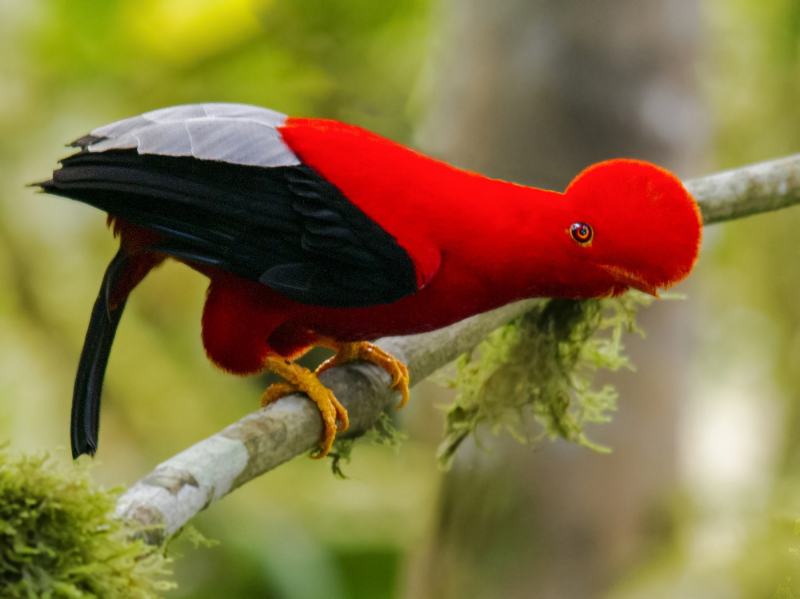
Via: eBird 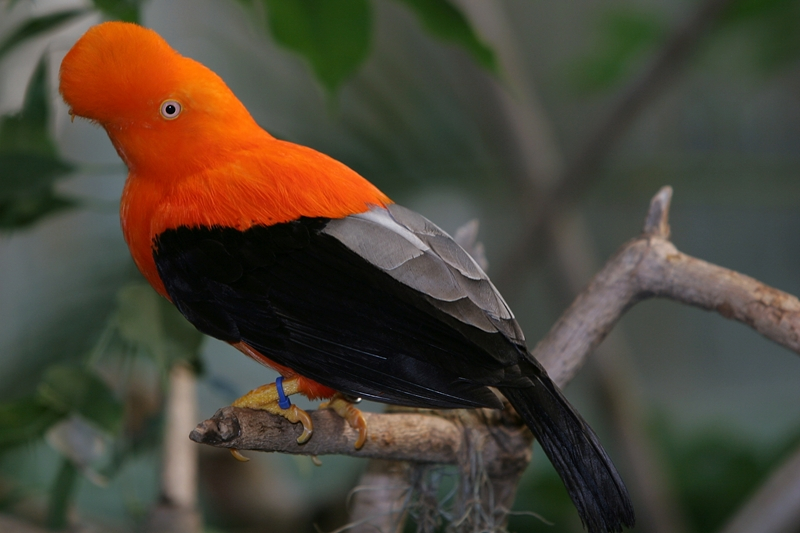
Via: Wikipedia












